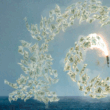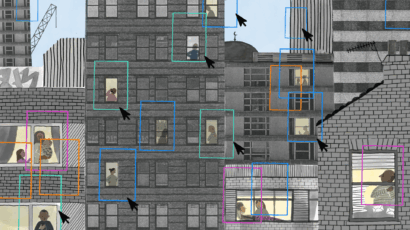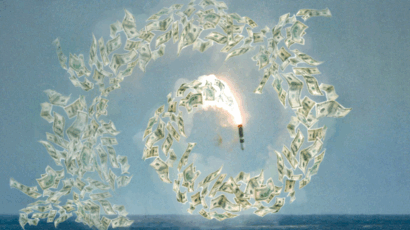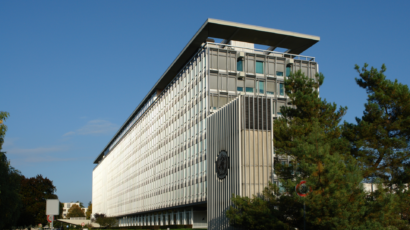Deterring conflict, getting to zero
By Gigi Kwik Gronvall, March 27, 2015
In the first round of commentary in response to the Bulletin column that suggested that other weapons, such as non-contagious biological weapons, could be a useful alternative to nuclear weapons as a deterrent, I focused on why biological weapons would not be suitable for this purpose. Doing so would be illegal and lead to proliferation of biological weapons that are much more accessible to nations than nuclear weapons; any use of those weapons would be devastating. An additional challenge for using biological weapons as a deterrent: Biological weapons are not easily placed into a verification regime, as they can easily be disguised as legitimate pharmaceutical or biotech research facilities because they do not have the expansive footprint of nuclear weapons facilities or require difficult to obtain fissionable material.
For this second round of commentary, I focus on the grave risks of relying on nuclear weapons as a deterrent, and what is actually being done—and could be done—about those risks. While it can be imagined that a “safer” weapon could be switched out for nuclear weapons in our strategy of deterrence, in practice this will not happen. The myriad challenges of reducing nuclear weapons numbers across the globe would remain. In any case, governments need to do something to diminish the potential for armed nuclear conflict, for accidental launch, and for the increasing likelihood of nuclear-armed terrorist groups, which threatens to upend the strategic balance between nuclear armed and protected nations in ways that cannot be deterred. Adding another weapon of mass destruction to the mix does nothing to decrease this strategic risk.
The dangers of relying on nuclear weapons for deterrence, the potential for accidental or unauthorized launch, and the challenges of verification of the reduction or elimination of weapons are well known. And there are many current and former world leaders who wish to see nuclear weapons reduced to zero, especially President Barack Obama, former President George H.W. Bush, and former government officials around the world, including those from Russia and South Korea. Other supporters of a "global zero" future include humanitarian-focused networks and groups, the UN Security Council (via a 2009 resolution), and the nonpartisan Nuclear Security Project, led by former Secretary of State George P. Shultz, former Defense Secretary William J. Perry, former Secretary of State Henry A. Kissinger, and former Senator Sam Nunn. Taking on a global zero vision requires global momentum, not only from the nations that have nuclear arms, but also from those nations that do not, but are protected through extended deterrence provided by nuclear powers.
Reduction of nuclear forces in nations that already have them is a primary step toward global zero—and may be the realpolitik end state of affairs. But there are many other actions that need to be taken, and that will require international action, pressure, and technical advances. The Comprehensive Test Ban Treaty, which calls on states to ban all nuclear explosions for whatever purpose, must be brought into effect. Currently, there are states that have signed but not ratified the treaty—including the United States—and others that have not signed, including India, Pakistan, and the Democratic People’s Republic of Korea. The risk of accident needs to be reduced, and one measure that could be taken involves the separation of delivery systems from their nuclear warheads. Such a move would not reduce the numbers of nuclear weapons, but it would make the world more secure if the risk of accidental, mistaken, or unauthorized launch could be drastically lowered; a global norm that eliminates the hair-trigger from nuclear launch would reduce the risks of a nuclear winter. The risks of nations cheating on their stockpile numbers, or of terrorist groups acquiring nuclear weapons or weapons materials, also need to be reduced, and such a reduction requires coordinated international work to secure to the highest standards the nuclear weapons that already exist, to stop production of plutonium and highly enriched uranium for weapons, to phase out use of weapons-grade material in civil or research facilities, to lock down fissile materials, and to implement strong verification and enforcement regimes for nuclear materials. Attribution of the perpetrators of a nuclear attack through nuclear forensics is a less certain process than many might expect; to be able to hold violators responsible, and to deter nations from selling nuclear materials, the international community must create a mechanism to detect such illegal actions and to bring violators to swift justice.
None of these steps—or others required on the road to global zero—will be accomplished immediately. Deep nuclear weapons reductions will almost certainly take years—how many years, of course, is open to debate and will be a function of the commitment of the nuclear-armed states. Even if another class of weapon could inspire a level of deterrence comparable to nuclear weapons, it would do nothing to diminish the risk of the current global nuclear deterrent stockpiles. There are limits to deterrence itself: Neither traditional deterrence nor a “winter-safe” version can be effective against terrorists with no return address.
The prospect of a nuclear winter is indeed unthinkably horrific and could threaten all life on earth. It is the duty of all governments to work hard to take this scenario off the table, however long it takes. As Sam Nunn wrote, “The way I view it is that if you view the goal of getting to zero as the top of the mountain… I think we have an obligation to our children and to our grandchildren to build paths up the mountain.” Adding a biological or other deterrent threat that can wreak more death and destruction would be going down the mountain, not up.
Share: [addthis tool="addthis_inline_share_toolbox"]














